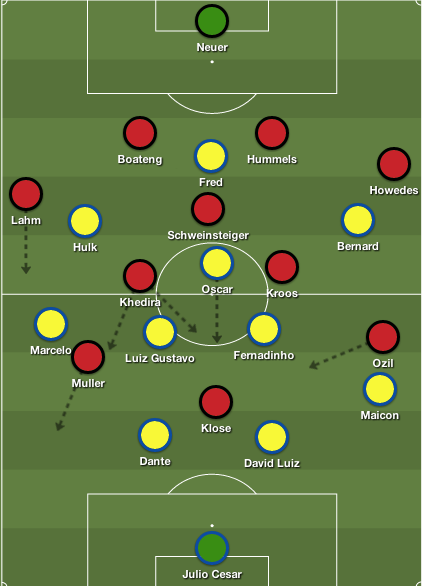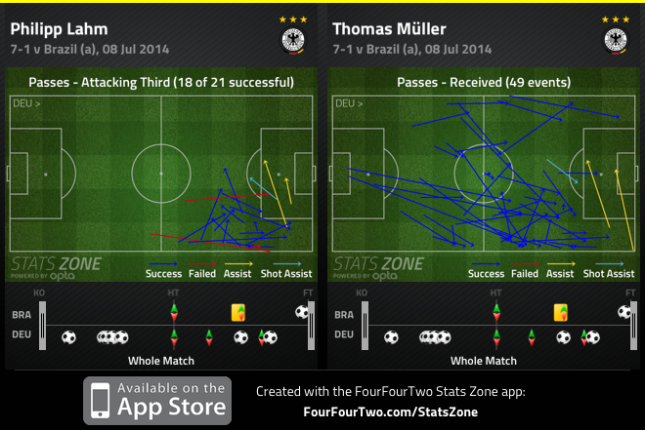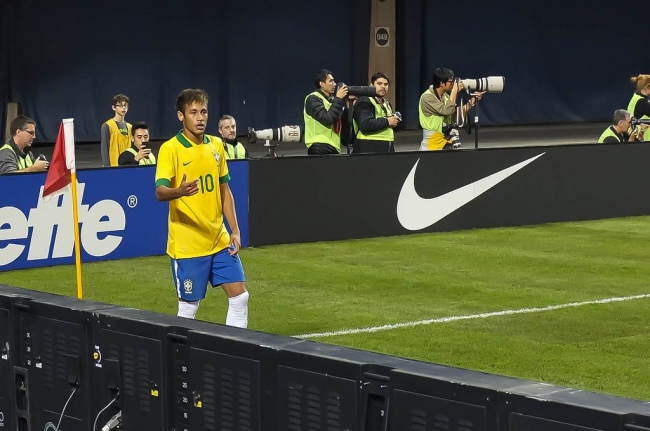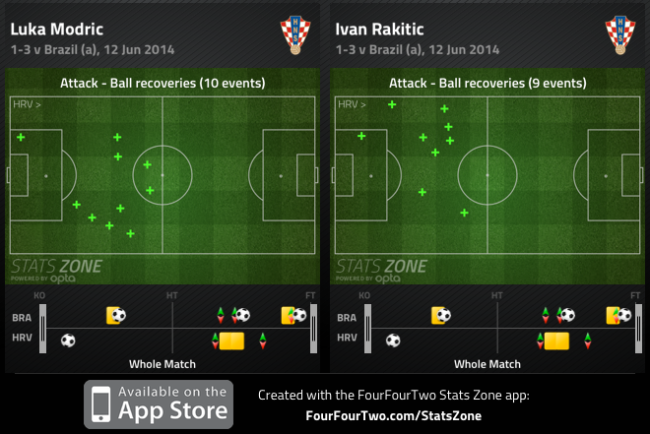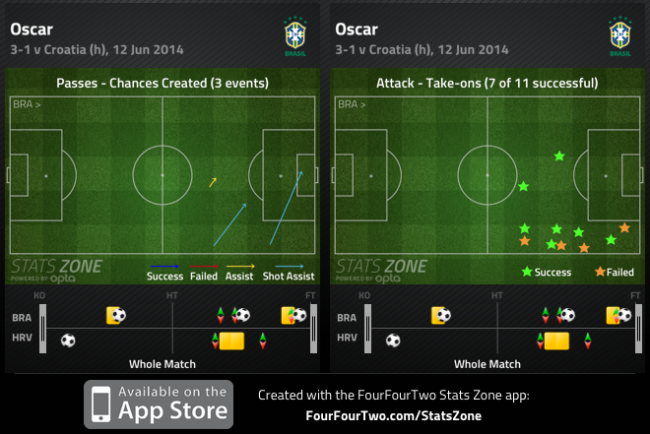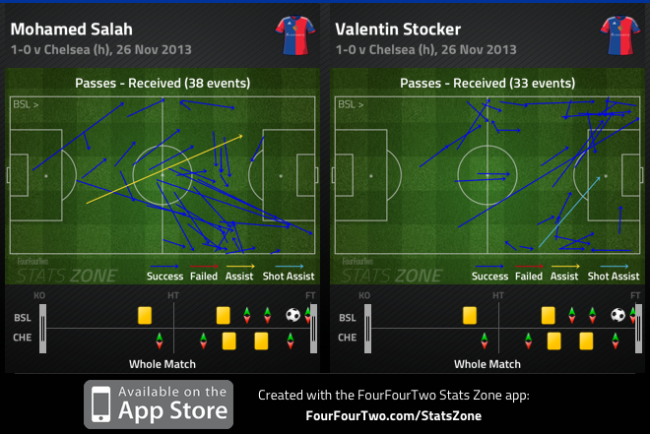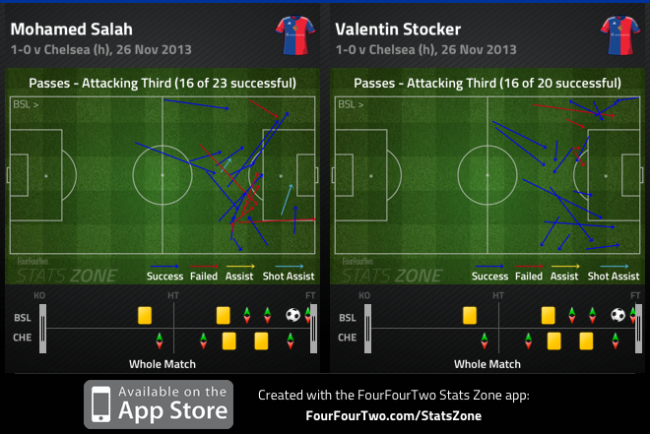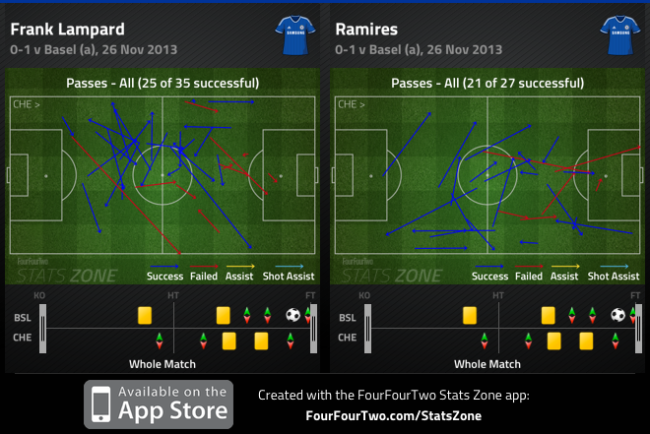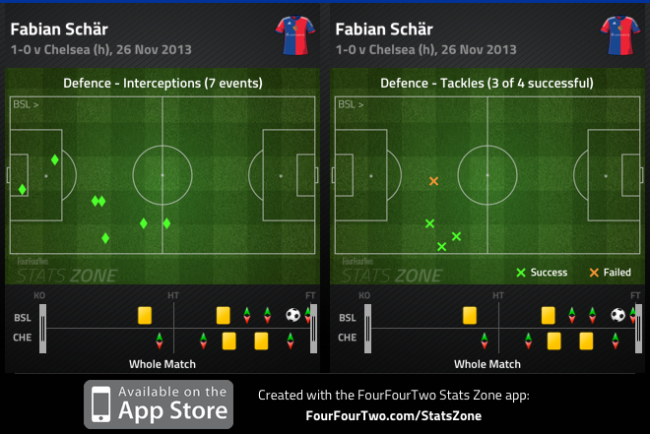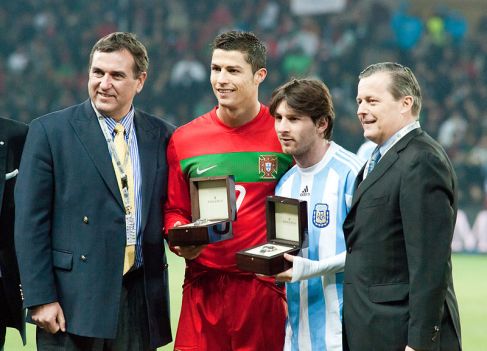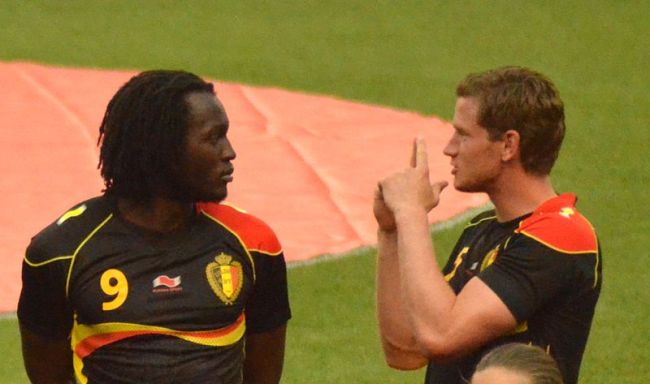
Miguel Tovar/STF
Neymar of Brazil fights for the ball with Carlos Sanchez of Colombia during the 2015 Copa America Chile Group C match between Brazil and Colombia at Monumental David Arellano Stadium on June 17, 2015 in Santiago, Chile.
Colombia avenged their World Cup disappointment with a deserved 1-0 victory over Brazil.
Dunga made two changes to the side that defeated Peru in Brazil’s opening game of the tournament. Thiago Silva started at centre-back alongside Joao Miranda, whereas Roberto Firmino’s inclusion pushed Diego Tardelli to the bench.
Jose Pekerman persisted with his default 4-4-2 formation, introducing Teo Gutierrez alongside Radamel Falcao upfront. James Rodriguez and Juan Cuadrado drifted infield from the flanks, while Carlos Sanchez and Edwin Valencia sat in midfield.
This was a cagey encounter that saw Colombia defend superbly in open play, stifling Neymar’s threat in transition, and clogging space in central areas, before breaking forward with numbers. Better finishing would solidify Colombia’s overall performance, as here, they were clearly the superior side.
Pressing
Considering the previous fixture between these two sides at the World Cup, the likelihood of a cagey, frenetic match was expected. The common theme throughout, though, was slightly contrasting: a slow-burning encounter filled with fouls and several transitional attacks.
The disparity in creativity in central areas was evident, but the manner in which both teams pressed served as the significant factor towards the outcome of the match. With both sides operating in a 4-4-2, the standard base shape out of possession was identical – a simple shift into two banks of four.
Where Brazil sat off and allowed Sanchez to play horizontal passes to the flanks, Filipe Luis stuck tight to his Chelsea teammate, Juan Cuadrado, preventing the Colombian winger from dribbling forward. Identical formations equally ensured that the individual battles were even, yet Sanchez’s freedom, along with Cuadrado and James moving centrally from the touch-line – enabling the full-backs to adopt advanced positions – led to Colombia enjoying the better half of possession.
Brazil’s issue
This was another unbalanced Brazil performance. There was a better sense of defensive solidity and organization out of possession, with Silva offering stability, and an improved performance in midfield from Elias and Fernandinho, but the issue the Brazilian’s encountered involved their route to goal.
Dunga’s men struggled to create chances in open play, and occasionally found it difficult to bypass Colombia’s pressing. Unlike the Brazilian’s, Pekerman instructed Valencia to press Elias, whereas Teo sat goal-side of Fernandinho, thwarting the midfielder’s influence from deeper positions .
Another issue involved overall creativity. Fred endured an abysmal opening half, and while Willian started the match well, his transition into a diligent, functional winger solely offered brief moments of balance, and minimal guile on the pitch. This match was a prime example as to why Brazil misses Oscar: a technically disciplined midfielder that would likely stifle Sanchez from deep, whilst moving into wide positions to balance the attack and create space in central areas.

Colombia’s defender Jeison Murillo (C) celebrates next to teammate Teofilo Gutierrez, after scoring against Brazil during their Copa America football match, at the Estadio Monumental David Arellano in Santiago, Chile, on June 17, 2015. AFP PHOTO / NELSON ALMEIDA
Here, Dunga’s men were too narrow, which was odd considering their consistent source of attack against Peru developed through Dani Alves’ crossing. Brazil’s best chance stemmed through Alves: the right back received a pass from Fernandinho between the lines, before turning Murillo, driving to the box and delivering a cross to an unmarked Neymar, but David Ospina’s heroics preserved Colombia’s lead.
Apart from Neymar’s dribbling, which in fairness was fairly mediocre – in terms of evading challenges to beat defenders – Brazil lacked natural combinations, guile and creativity in the final third.
Colombia chances
As stated prior, both sides encountered difficulties in open play, which led to several players resorting to ambitious shots from distance. Colombia, however, enjoyed the better chances in transition and through their intense pressing.
Alves was dispossessed twice in the opening half – by James and Valencia – with both plays resulting in crosses from the left flank into the box, but neither midfielder was able to connect with the strikers. The strikers were paired against two physical Brazilian centre-backs and were unable to dominate around the box, yet when chances were presented it was the finishing and confidence, mainly from Falcao, that kept Brazil alive.
Then there were the quick transitions that were often sparked by deep balls from James to the flanks or over the Brazilian defence. There was a quick pass from James that hit off Teo into the path of Falcao, but the striker fired his effort wide. Yet, subsequently both Cuadrado and Falcao both stormed forward from half on individual runs, but neither player could hit the net.
Colombia’s pressing was vastly superior to Brazil’s throughout, and the combination of dynamism and creativity from Cuadrado and James posed several problems when they recovered possession.
Sanchez
More so, when you compare both sides, the major difference lied in the manner that both guarded central areas. The key man throughout was Sanchez, who formed an efficient pairing with Valencia.
Initially, Cristian Zapata and Jeison Murillo tracked Neymar’s runs in central areas, and proactively stepped forward to steer the tricky Brazilian away from goal – Murillo recorded a match-high seven interceptions. Yet, when Neymar moved into the midfield zone, Sanchez, who impressively completed five tackles and interceptions, often overpowered the Brazilian talisman.
With Neymar frustrated with the physicality throughout, Brazil was deprived of the penetrative runs that served as one of the few plausible sources for a goal. Ultimately, Brazil lacked a player in Sanchez’s mold – the provided adequate protection ahead of the back four, negating the opposition’s threat in the final third with powerful tackles, combined with vital last ditch blocks and interceptions.
Substitutions/Second Half
Following a disappointing opening half, Dunga turned to Philippe Coutinho to replace the underwhelming Fred. Whereas Brazil’s shape remained, it was evident Dunga was seeking another passer in midfield. The issue was that Coutinho’s incisive passing in tight spaces is mediocre, and he didn’t offer Brazil the required assistance. Coutinho excels in a deeper role in midfield, playing penetrative passes behind the defence, but here, he helped Brazil retain possession at a slow tempo, whereas his distribution was fairly sloppy.
Ultimately this made things worse for Brazil: They still remained narrow, and with Alves equally in a central position, Colombia simply sat two banks of four into a congested midfield. Brazil moved to a 4-3-3 with the introduction of Douglas Costa, and then Tardelli, but it equally didn’t alter the pattern of the match, as all three strikers maintained narrow positions.
Essentially, Brazil’s best chances came via transition through Neymar, and from a Murillo error that Firmino oddly squandered. Pekerman eventually moved to a 4-2-3-1 with the arrival of Victor Ibarbo, but their task remained the same. Maintain a compact shape, and break with numbers in transition to kill the game.
Cuadrado and James both came close following impressive individual moves, yet despite the two system alterations, stylistically, the second half was drab. Brazil couldn’t break down a determined Colombian outfit, yet while Pekerman’s men attacked well in numbers, their finishing was disappointing.
Conclusion
Two games into this year’s Copa America, and the vast dissimilarity between both Brazil performances highlights the lack of balance throughout the squad. While Colombia defended well for lengthy spells of the match, the lack of cohesion and heavy reliance on Neymar’s dribbling for creativity was vivid.
This wasn’t a vintage Colombian performance, but here, Pekerman’s tactics were spot on. Four years ago, Sanchez negated Lionel Messi’s threat against Argentina, and his performance was equally impressive on Neymar. The Colombian midfielder continuously thwarted Neymar’s mazy dribbles, preventing Brazil from attacking their zones with pace.
When two teams nearly at the same skill level play identical systems, the outcome of the match is often determined by definitive margins. Colombia were rarely tested due to Sanchez’s impressive job on Neymar, and in a match with very few created chances, Pekerman’s men displayed an effective approach to defeat Brazil.


